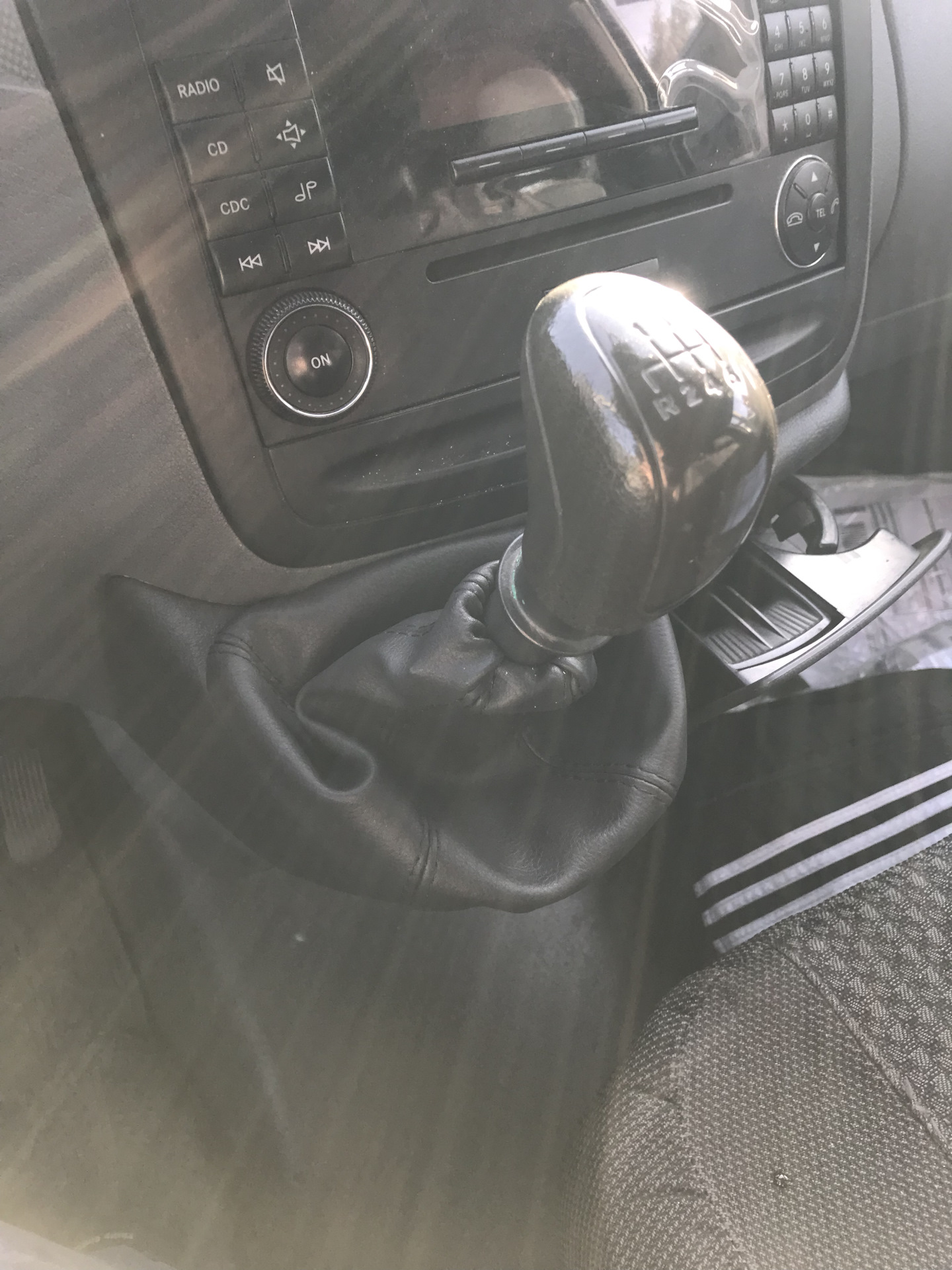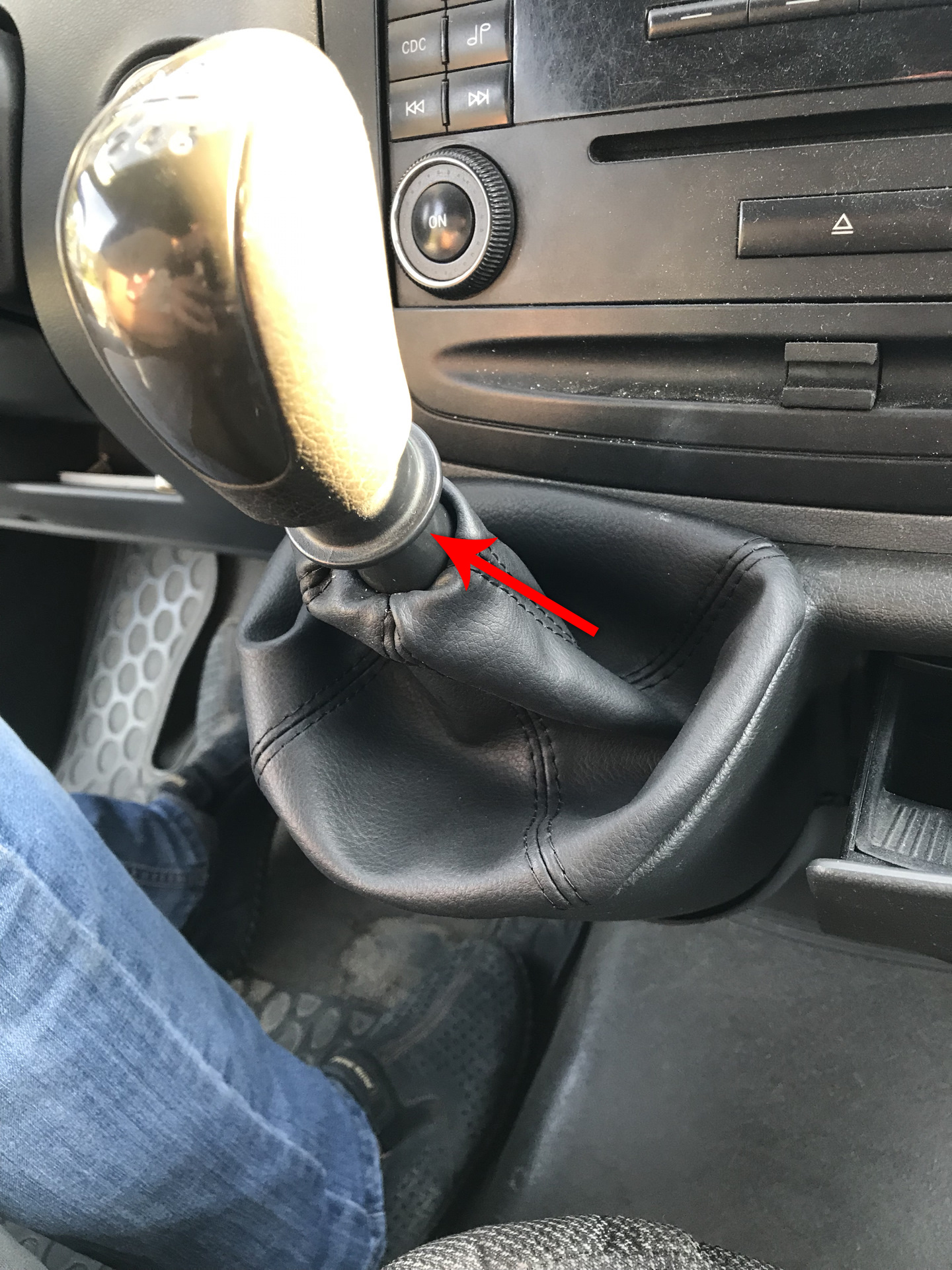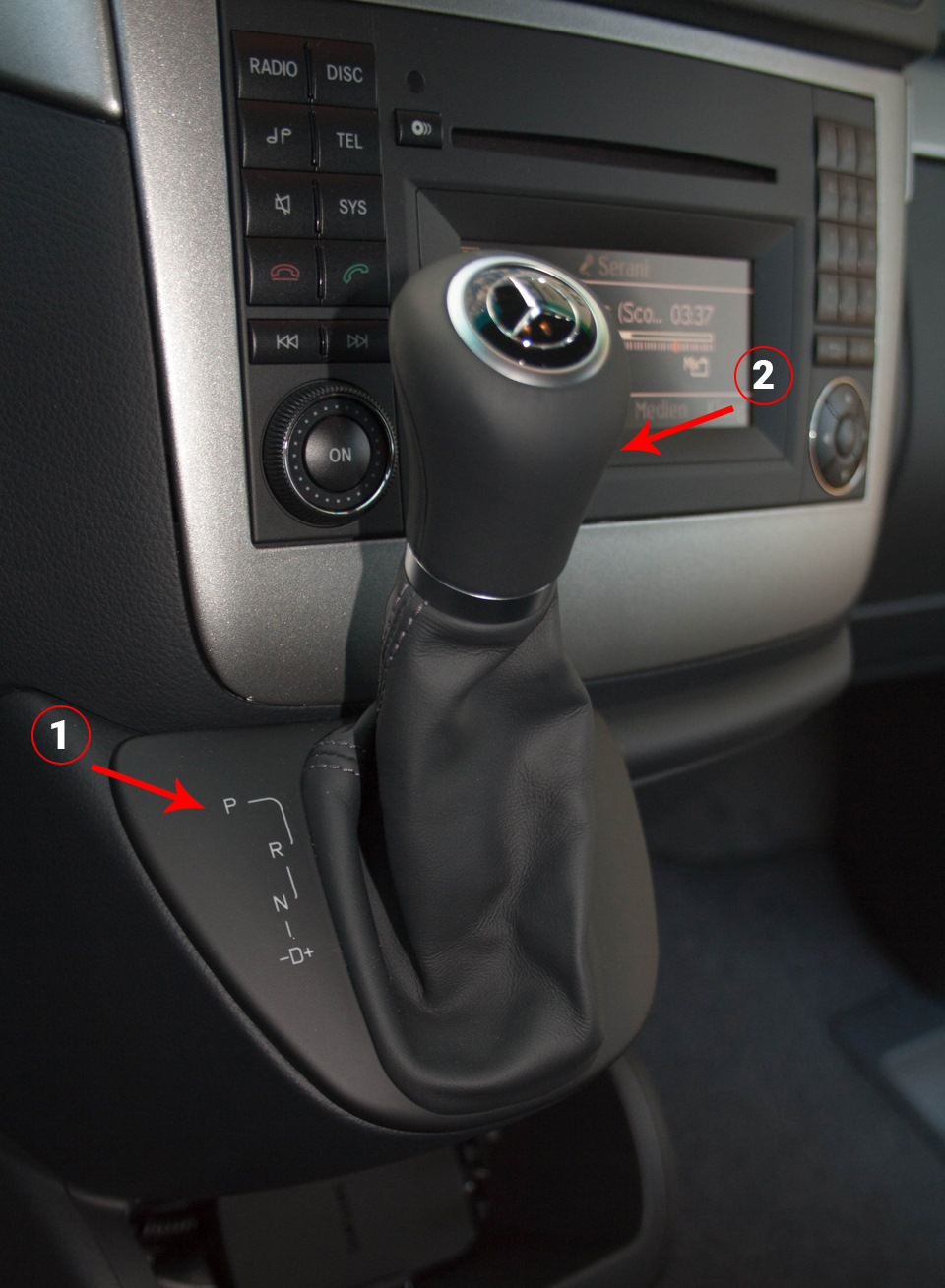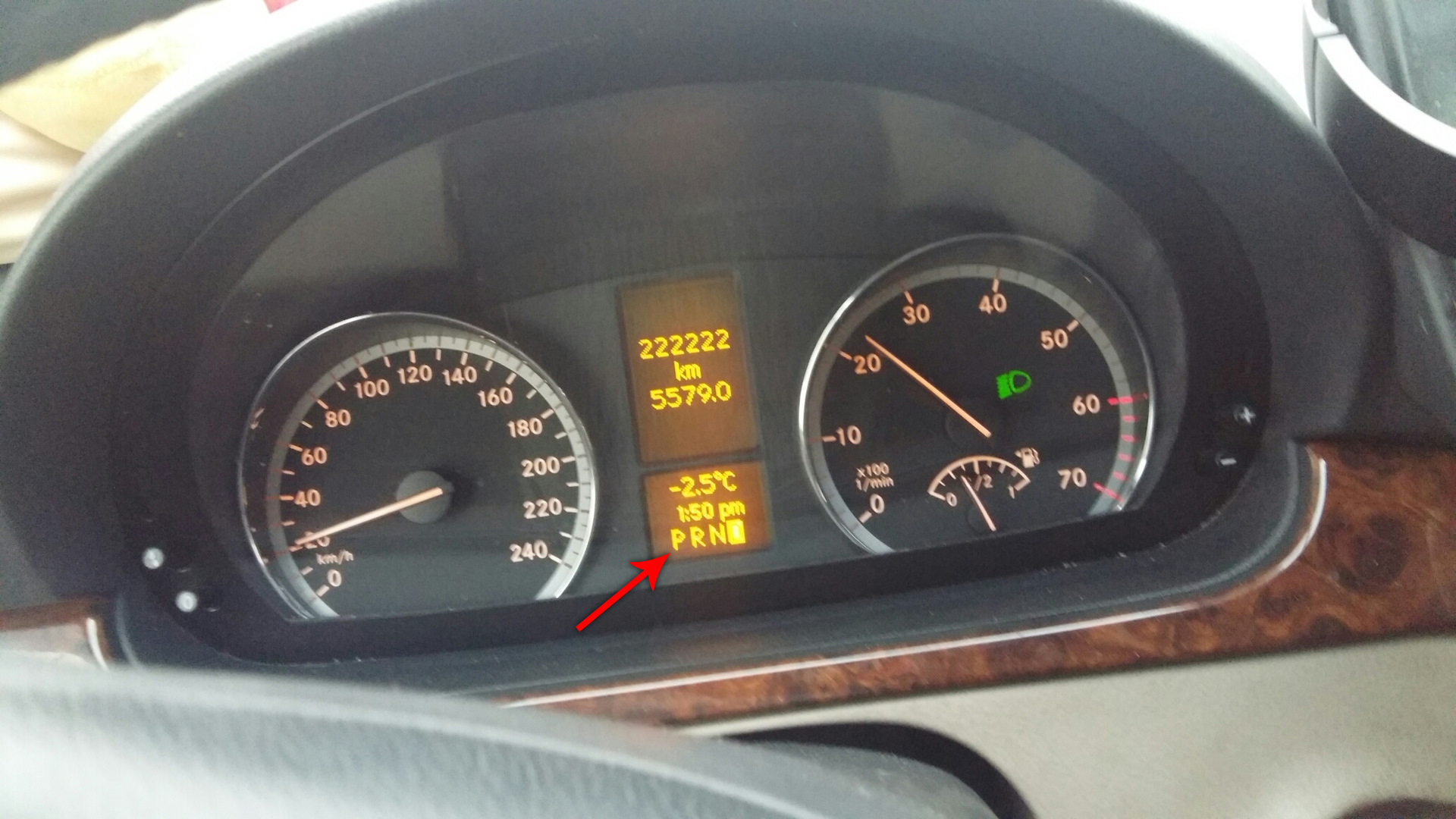The Mercedes Vito gearbox is a six-speed manual or a five-speed automatic.
Operate a manual transmission (manual transmission) according to the shift pattern printed on the handle of its lever. In the neutral position, the lever is automatically set to the position for engaging the 3rd or 4th gear, from which it can be moved forward or backward, respectively. To engage 1st or 2nd gear, move the lever to the left until it stops, and then forward or backward, respectively. To engage the V transfer, move the lever to the right until it stops and forward. To engage the VI gear, move the lever to the right until it stops and down.

Manual transmission (manual transmission for Mercedes Vito)
To engage reverse gear, squeeze the lock up, move the lever to the left until it stops, and then down (after that, the reverse gear on the Mercedes Vito will be engaged).

Latch for engaging reverse gear
WARNING:
Engage reverse gear only when the car is completely stopped. To avoid damage to the transmission, avoid shifting when the wheels are slipping.
Automatic transmissions have five forward gears and one reverse gear. Each gear is engaged automatically depending on the position of the gear selector lever, vehicle speed and the position of the accelerator pedal.

Automatic transmission lever for Mercedes Vito 639
Automatic transmission selector lever:
1 - scale of control modes.
2 - lever handle.
The selector lever 2 is located under the audio radio, as is the manual transmission control lever. On the decorative strip there is a scale of 1 control modes. The scale has the following designations:
"P" stands for parking. In this position, the transmission is locked to prevent movement of the parked vehicle. If the selector lever is in this position, you can start the engine;
"R" - reverse. Move the lever to this position only after the vehicle has come to a complete stop;
WARNING:
Never move the selector lever to the "P" (parking) or "R" (reverse) position while the vehicle is moving! This will damage the transmission.
"N" is neutral. In this position of the lever in the gearbox, no gear is engaged. This position is used during long stops, for example, in traffic jams.
WARNING:
Never move the selector lever to the "N" (neutral) position while driving! If you do this, you could accidentally move the lever to the "P" (park) or "R" (reverse) position while the vehicle is in motion, resulting in damage to the transmission.
In addition, engine braking will become impossible.
Useful advice:
To avoid losing control of the vehicle, always keep your foot on the brake pedal when the lever is in the "N" (neutral) position and when moving the lever to this position.
If the vehicle is on a slope, then when starting the engine, the selector lever must be set to "P" (park), not "N" (neutral).
"D" - forward movement. This is the main position of the selector lever, in which it is located most of the time when driving. The automatic transmission then selects the optimum gear for the vehicle's speed and acceleration. Press the brake pedal to move the selector lever from "P" (park) to "R" (reverse).
Note:
A special locking device will prevent the selector lever from being moved from the "P" (park) or "N" (neutral) position to any other position if the brake pedal is not held down.
With the ignition on, a warning lamp corresponding to the position of the selector lever appears in the information display in the instrument cluster.

Gear engaged indicator
Source: http://carpedia.club/
![W638 [1996 - 2003]](/uploads/Mercedes-Benz_Vito_I_W638_1996_-_2003_.jpg)
![W639 [2003 - 2010]](/uploads/Mercedes-Benz_Vito_2013.jpg)